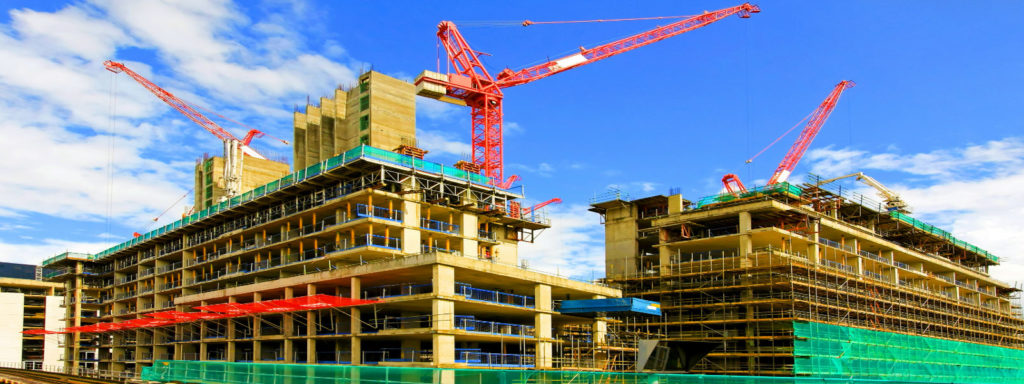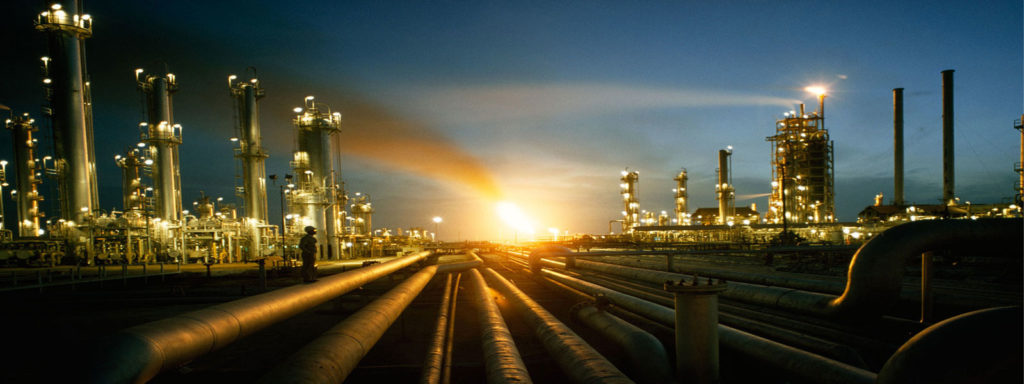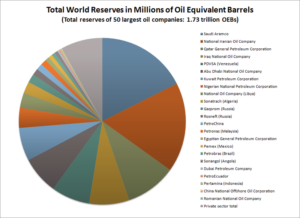
Construction is one of the most dangerous occupations in the world, incurring more occupational fatalities than any other sector in both the United States and in the European Union. In 2009, the fatal occupational injury rate among construction workers in the United States was nearly three times that for all workers. Falls are one of the most common causes of fatal and non-fatal injuries among construction workers. Proper safety equipment such as harnesses and guardrails and procedures such as securing ladders and inspecting scaffolding can curtail the risk of occupational injuries in the construction industry. Other major causes of fatalities in the construction industry include electrocution, transportation accidents, and trench cave-ins.
Other safety risks for workers in construction include hearing loss due to high noise exposure, musculoskeletal injury, chemical exposure, and high levels of stress.
Construction is the process of constructing a building or infrastructure. Construction differs from manufacturing in that manufacturing typically involves mass production of similar items without a designated purchaser, while construction typically takes place on location for a known client. Construction as an industry comprises six to nine percent of the gross domestic product of developed countries. Construction starts with planning,[citation needed] design, and financing; and continues until the project is built and ready for use.
Large-scale construction requires collaboration across multiple disciplines. An architect normally manages the job, and a construction manager, design engineer, construction engineer or project manager supervises it. For the successful execution of a project, effective planning is essential. Those involved with the design and execution of the infrastructure in question must consider zoning requirements, the environmental impact of the job, the successful scheduling, budgeting, construction-site safety, availability and transportation of building materials, logistics, inconvenience to the public caused by construction delays and bidding, etc. The largest construction projects are referred to as megaprojects.
Construction is a general term meaning the art and science to form objects, systems, or organizations, and comes from Latin constructionem (from com- “together” and struere “to pile up”) and Old French construction. Construction is used as a verb: the act of building, and a noun: how a building was built, the nature of its structure.
In general, there are three sectors of construction: buildings, infrastructure and industrial. Building construction is usually further divided into residential and non-residential (commercial/institutional). Infrastructure is often called heavy/highway, heavy civil or heavy engineering. It includes large public works, dams, bridges, highways, water/wastewater and utility distribution. Industrial includes refineries, process chemical, power generation, mills and manufacturing plants. There are other ways to break the industry into sectors or markets.
Engineering News-Record (ENR) is a trade magazine for the construction industry. Each year, ENR compiles and reports on data about the size of design and construction companies. They publish a list of the largest companies in the United States (Top-40) and also a list the largest global firms (Top-250, by amount of work they are doing outside their home country). In 2014, ENR compiled the data in nine market segments. It was divided as transportation, petroleum, buildings, power, industrial, water, manufacturing, sewer/waste, telecom, hazardous waste plus a tenth category for other projects. In their reporting on the Top 400, they used data on transportation, sewer, hazardous waste and water to rank firms as heavy contractors.
The Standard Industrial Classification and the newer North American Industry Classification System have a classification system for companies that perform or otherwise engage in construction. To recognize the differences of companies in this sector, it is divided into three subsectors: building construction, heavy and civil engineering construction, and specialty trade contractors. There are also categories for construction service firms (e.g., engineering, architecture) and construction managers (firms engaged in managing construction projects without assuming direct financial responsibility for completion of the construction project).
Building construction
Building construction is the process of adding structure to real property or construction of buildings. The majority of building construction jobs are small renovations, such as addition of a room, or renovation of a bathroom. Often, the owner of the property acts as laborer, paymaster, and design team for the entire project. Although building construction projects typically include various common elements, such as design, financial, estimating and legal considerations, many projects of varying sizes reach undesirable end results, such as structural collapse, cost overruns, and/or litigation. For this reason, those with experience in the field make detailed plans and maintain careful oversight during the project to ensure a positive outcome.
The National Cement Share Company of Ethiopia’s new plant in Dire Dawa.
Commercial building construction is procured privately or publicly utilizing various delivery methodologies, including cost estimating, hard bid, negotiated price, traditional, management contracting, construction management-at-risk, design & build and design-build bridging.
Residential construction practices, technologies, and resources must conform to local building authority regulations and codes of practice. Materials readily available in the area generally dictate the construction materials used (e.g. brick versus stone, versus timber). Cost of construction on a per square meter (or per square foot) basis for houses can vary dramatically based on site conditions, local regulations, economies of scale (custom designed homes are often more expensive to build) and the availability of skilled tradespeople. As residential construction (as well as all other types of construction) can generate a lot of waste, careful planning again is needed here.
Residential construction
The most popular method of residential construction in North America is wood-framed construction. Typical construction steps for a single-family or small multi-family house are:
- Develop floor plans and obtain a materials list for estimations (more recently performed with estimating software)
- Obtain government building approval if necessary
- Clear the building site
- Survey to stake out for the foundation
- Excavate the foundation and dig footers.
- Pour a foundation and footers with concrete
- Build the main load-bearing structure out of thick pieces of wood and possibly metal I-beams for large spans with few supports. See framing (construction)
- Add floor and ceiling joists and install subfloor panels
- Cover outer walls and roof in OSB or plywood and a water-resistive barrier.
- Install roof shingles or other covering for flat roof
- Cover the walls with siding, typically vinyl, wood, or brick veneer but possibly stone or other materials
- Install windows
- Frame interior walls with wooden 2x4s
- Add internal plumbing, HVAC, electrical, and natural gas utilities
- Building inspector visits if necessary to approve utilities and framing
- Install insulation and interior drywall panels (cementboard for wet areas) and to complete walls and ceilings
- Install bathroom fixtures
- Spackle, prime, and paint interior walls and ceilings
- Additional tiling on top of cementboard for wet areas, such as the bathroom and kitchen backsplash
- Install final floor covering, such as floor tile, carpet, or wood flooring
- Install major appliances
- Unless the original owners are building the house, at this point it is typically sold or rented.
New construction techniques and sustainability
As efficiency codes have come into effect in recent years, new construction technologies and methods have emerged. University Construction Management departments are on the cutting edge of the newest methods of construction intended to improve efficiency, performance and reduce construction waste.
New techniques of building construction are being researched, made possible by advances in 3D printing technology. In a form of additive building construction, similar to the additive manufacturing techniques for manufactured parts, building printing is making it possible to flexibly construct small commercial buildings and private habitations in around 20 hours, with built-in plumbing and electrical facilities, in one continuous build, using large 3D printers. Working versions of 3D-printing building technology are already printing 2 metres (6 ft 7 in) of building material per hour as of January 2013, with the next-generation printers capable of 3.5 metres (11 ft) per hour, sufficient to complete a building in a week. Dutch architect Janjaap Ruijssenaars’s performative architecture 3D-printed building is scheduled to be built in 2014.
In the current trend of sustainable construction, the recent movements of New Urbanism and New Classical Architecture promote a sustainable approach towards construction, that appreciates and develops smart growth, architectural tradition and classical design. This is in contrast to modernist and short-lived globally uniform architecture, as well as opposing solitary housing estates and suburban sprawl. Both trends started in the 1980s.
The construction site may be shut down due to bad weather. Erecting scaffolded tents over the site may reduce the number of lost work days, increasing productivity.
The first huts and shelters were constructed by hand or with simple tools. As cities grew during the Bronze Age, a class of professional craftsmen, like bricklayers and carpenters, appeared. Occasionally, slaves were used for construction work. In the Middle Ages, these were organized into guilds. In the 19th century, steam-powered machinery appeared, and later diesel- and electric powered vehicles such as cranes, excavators and bulldozers.
Fast-track construction has been increasingly popular in the 21st century. Some estimates suggest that 40% of construction projects are now fast-track construction.
List of countries by the largest output in construction
List of countries with the largest construction output in 2015
| Economy | Construction output in 2015 (billions in USD) |
| (01) India | 849 |
| (02) United States | 599 |
| (03) China | 569 |
| (04) Japan | 333 |
| (05) France | 147 |
| (06) Germany | 143 |
| (07) United Kingdom | 131 |
| (08) Canada | 131 |
| (09) Australia | 115 |
| (10) Russia | 111 |
| (11) Brazil | 109 |
| (12) Italy | 107 |
| (13) Spain | 104 |
| (14) Indonesia | 93 |
| (15) Mexico | 92 |
| (16) South Korea | 58 |
| (17) Turkey | 35 |
| (18) United Arab Emirates | 34 |
| (19) Venezuela | 34 |
| (20) Netherlands | 34 |
| (21) Poland | 34 |
| (22) Switzerland | 33 |
| (23) Saudi Arabia | 32 |
| (24) Iran | 29 |
| (25) Colombia | 29 |


 Oil & Gas, any of a group of fuel gases produced from oil by exposing it to high temperatures. High-Btu oil gas is so called because of its high heating value; it is often used to supplement natural gas during periods of high demand. Refinery oil gases are produced as byproducts during normal heat treatment in oil refining. Their chief use is in the heating of refinery equipment. Typically, oil gas consists of methane, ethane, propane, butane, and some of their derivatives.
Oil & Gas, any of a group of fuel gases produced from oil by exposing it to high temperatures. High-Btu oil gas is so called because of its high heating value; it is often used to supplement natural gas during periods of high demand. Refinery oil gases are produced as byproducts during normal heat treatment in oil refining. Their chief use is in the heating of refinery equipment. Typically, oil gas consists of methane, ethane, propane, butane, and some of their derivatives.

